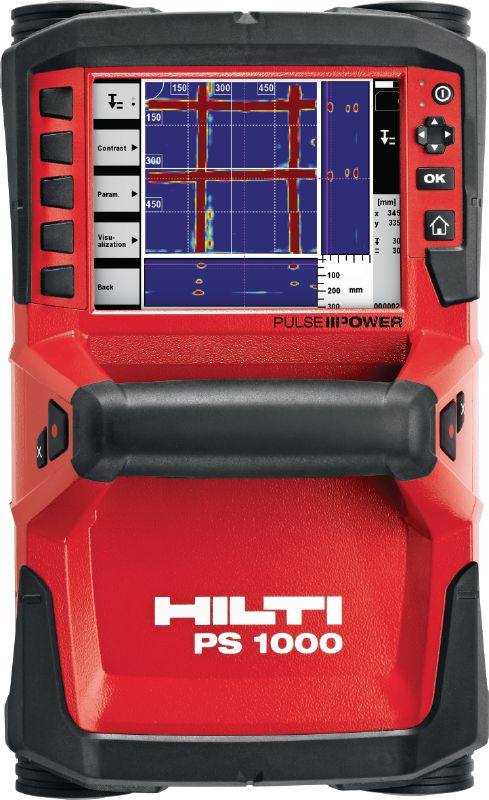Enhanced RainierGPR Concrete Scanning Providers Revealed
Enhanced RainierGPR Concrete Scanning Providers Revealed
Blog Article
Exploring the Midst: A Comprehensive Overview to Concrete Scanning and Its Diverse Applications
In the world of building and construction and framework development, the precise process of concrete scanning holds an essential function in making certain the architectural stability and safety of jobs. As innovation continues to develop, the applications of concrete scanning have expanded much past plain surface-level analyses. From detecting rebar and post-tension cables to mapping out channels and voids hidden within concrete frameworks, the abilities of contemporary scanning methods are both necessary and excellent. The true depth of concrete scanning's prospective reaches even additionally, branching into unanticipated sectors and stimulating innovative solutions. The interconnected internet of possibilities that concrete scanning presents is not only interesting however likewise important for the advancement of various sectors.
Importance of Concrete Scanning
Comprehending the importance of concrete scanning is critical in guaranteeing the security and integrity of frameworks during building and construction and restoration projects. Concrete scanning makes use of sophisticated technologies such as ground-penetrating radar (GPR) and electromagnetic induction to discover embedded objects, gaps, or other anomalies within concrete structures.
Furthermore, concrete scanning plays a crucial function in ensuring conformity with building ordinance and laws that mandate the security of existing structural components throughout construction activities. By properly drawing up the interior composition of concrete, scanning modern technologies enable construction specialists to make enlightened decisions that support the structural security and sturdiness of buildings and facilities tasks. Essentially, the importance of concrete scanning depends on its capability to secure both the architectural stability and the personnel associated with construction ventures.
Technologies Used in Concrete Scanning
Concrete scanning relies on innovative modern technologies such as ground-penetrating radar (GPR) and electromagnetic induction to properly find embedded objects and anomalies within concrete structures. Ground-penetrating radar runs by releasing high-frequency electromagnetic waves into the concrete.
Electromagnetic induction, on the other hand, functions by producing electromagnetic fields around a concrete framework via a transmitter coil. When steel items are existing within the concrete, they interfere with these electromagnetic areas, triggering eddy currents to move with the metal. By measuring the modifications in the magnetic fields with a receiver coil, the system can identify the area of metallic objects in the concrete.
These sophisticated modern technologies play an important role in non-destructive screening, making certain the safety and security and integrity of concrete frameworks in different industries.
Applications in Building Market
Within the construction industry, concrete scanning technology locates diverse applications that enhance project effectiveness and security. In addition, concrete scanning is used for situating spaces, such as air pockets or areas of damage within concrete, which can jeopardize the overall stamina of a structure. Concrete scanning plays an important role in top quality control by verifying the density of concrete covers over support, guaranteeing conformity with design requirements and requirements.

Safety And Security Benefits of Concrete Scanning
In the world of construction safety and security, the implementation of concrete scanning modern technology provides a critical advantage in preemptively identifying potential dangers and fortifying architectural honesty. By using innovative scanning approaches such as ground-penetrating radar (GPR) and electro-magnetic induction, construction teams can accurately locate rebar, post-tension cable televisions, avenues, and various other surprise items within concrete frameworks. This proactive strategy significantly lowers the danger of unintentional strikes during drilling, reducing, or coring tasks, consequently protecting against costly problems, injuries, and job delays.
In addition, concrete scanning improves worker security by supplying real-time info concerning the structural condition of concrete elements. By addressing prospective security worries immediately, concrete scanning contributes to developing a safe and secure functioning setting and alleviating the probability of structural failings or accidents on construction websites.
Future Trends in Concrete Scanning
Arising developments in scanning technology are poised to reinvent the field of concrete evaluation and analysis. By using the power of AI, these systems can assess large quantities of data collected throughout imp source scanning processes to provide even more exact and in-depth understandings into the problem of concrete frameworks.
Another substantial fad is the development of more portable and straightforward scanning devices. Miniaturization of scanning equipment enables much easier accessibility to constrained spaces and remote places, making examinations extra read the full info here extensive and effective. Additionally, improvements in cordless communication technologies enable real-time data transfer and evaluation, promoting quicker decision-making procedures.
Furthermore, there is an expanding emphasis on sustainability in concrete scanning innovations - RainierGPR Concrete Scanning. Producers are increasingly incorporating eco-friendly products and energy-efficient functions into their tools to lower ecological influence. These future fads are established to boost the efficiency, precision, and sustainability of concrete scanning techniques, forming the sector's future landscape
Verdict
In final thought, concrete scanning plays an essential function in the building market by making certain the security and performance of numerous projects. As innovation advancements, the future of concrete scanning holds encouraging growths for boosting building processes.

Report this page